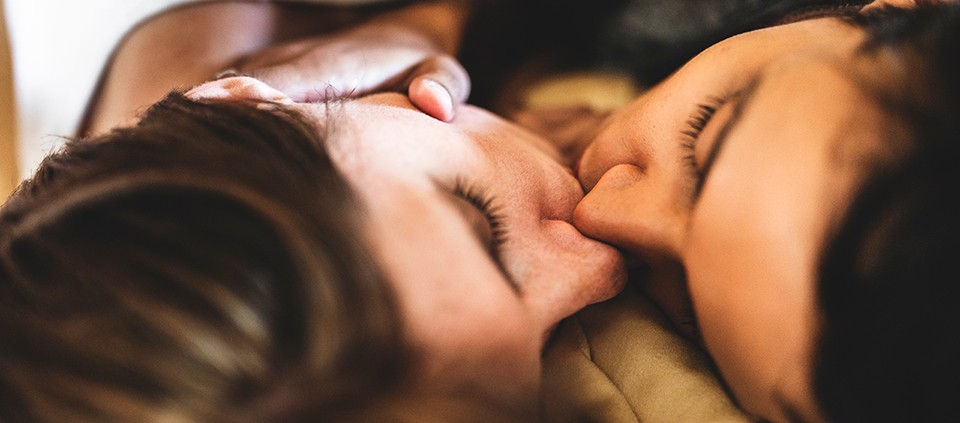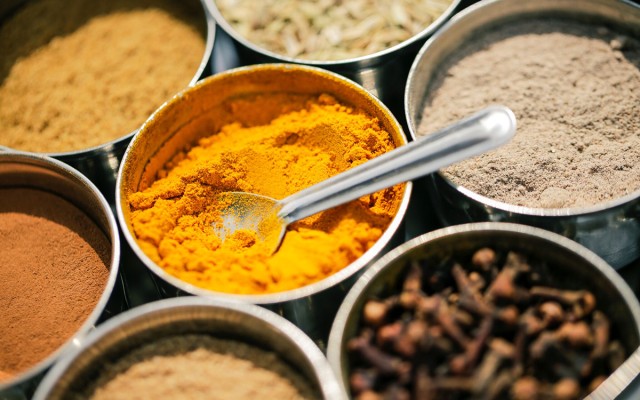Six Ayurvedic Practices for a Better Sex Life

How much sex “should” you have? A study published by the Society for Personality and Social Psychology showed that those in a committed relationship are happiest when having sex once a week. Have it more? Not more happy. Have it less? Less happy. Once a week is the magic number.
But what does Ayurveda have to say? As with everything in Ayurveda, it’s all about following the rhythms of nature. Vagbhata, the author of a 2,500-year-old classical Ayurvedic text called the Ashtanga Hridayam, provides recommendations on how much sex we can have in each season. That’s right: a seasonal sexual routine. Here’s what Vagbhata says: “During the winter season, the person can indulge in sex daily as much as they like after making use of aphrodisiacs and obtaining strength; once in three days in spring and fall; and once every two weeks in the rainy season and summer.”
This advice is based on the Ayurvedic principles of “like increases like” and “opposites decrease.” Just as we sport hats and sip soup in winter to balance the cold, and wear shorts and eat salad in summer to balance the heat, we can create a routine with sex that balances the qualities of the season.
Let’s break down Vaghbata’s prescription. He tells us that we can have sex every day in the winter—but only after “making use of aphrodisiacs and obtaining strength.” In other words, sex can deplete your ojas—your vital essence, which gives you strength and immunity. Strong ojas not only supports stable bodily tissues, it also supports a stable mind, clear consciousness, and better stress resilience. So, if you want to have a daily sexual practice in the winter, you will need to have a nourishing, ojas-building lifestyle.
Why does Vaghbata recommend sex only every two weeks in the summer? When this text was written, most people were growing their own food. Who has the time or energy for sex when you have to grow a year’s worth of food in three months? This is the time of year when your body is the least strong because of all the output of energy and activity. Plus, you’re losing ojas by sweating in the intense heat. Cooling practices would be recommended here, and sex is not a cooling practice.
Vaghbata says that the body is medium in strength in the spring and the fall, strongest in the winter, and weakest in the summer. This is directly related to the strength of agni, which in turn builds ojas. So, you can have sex every three days in spring and fall—the moderate times of year, when the strength of agni and of the body are at medium capacity.
No matter how often you get it on, at any time of year, you can use Ayurveda to enhance your sex life and to preserve and build your ojas. Here’s how.
The Deed According to Your Dosha
First, if you don’t know it yet, take our quiz to determine your dosha, or Ayurvedic constitution. If you are primarily kapha, with a strong, stable body and mind, you will be able to have more frequent intercourse without depleting your ojas. If you are primarily vata—with less musculature, less fat, a more sensitive constitution, and a more nervous temperament—you might want to consider preserving ojas and not having intercourse as often. For pitta types, the name of the game is always moderation. Pittas are not as hearty as kaphas and not as sensitive as vatas, so they need to stay moderate in all that they do.
Love to Eat, Eat to Love
So you want a strong libido, but you love salad and smoothies. Well, you burn up to 300 calories each time you have sex—lettuce is not going to cut it. Eat cooked foods that contain high-quality oils, such as ghee, coconut oil, or olive oil. Avoid raw foods, as they are drying and will sap your vital juices. You also lose ojas every time you have sex. To replenish your energy, try this spiced milk recipe, which can be made with dairy or non-dairy milk. Spiced milk is the new post-coital cigarette!
Oil It Up
Keep oil in your food and oil in the bedroom. Instead of commercial lube, use all-natural coconut oil. (But be warned: It can break down the latex in a condom.) Not in the mood for sex, but still craving connection? Use oil to give each other full-body or foot massages. Oil massage builds ojas, makes your skin soft, and protects against illness. Nerdy Ayurvedic tidbit: Women’s reproductive organs are hot in nature, in order to incubate life. Men’s reproductive organs are cooling in nature, to keep their sperm alive. Cooling coconut oil works for both systems. Don’t use sesame oil, which is heating.
Herbs are for Horses
There are Ayurvedic herbs that support a strong libido. Men can use ashwagandha; it means “smells like a horse,” but don’t worry, you won’t—you’ll just be as strong as one. Take two tablets with that hot spiced milk you’ll be sipping. Women can take shatavari, meaning “she who possesses 100 husbands.” Again, take two tablets with hot spiced milk and then go to town.
From Mat to Mattress
Yoga supports both ojas and a fulfilling sex life. To strengthen your legs and abs and support reproductive health and libido, focus on grounding poses like standing lunges, squats, seated twists, and prone backbends. Breathe deep into your lower abdomen. Link breath with movement and allow your attention to be drawn inward to your heart and belly. Finish your practice with Alternate-Nostril Breath (Nadi Shodhana). Even better, practice alongside your partner. Even better than that, do partner yoga together to create deep bonds and trust.
Only Connect
Bottom line: A thriving sex life is based on trust and connection. Create a safe space for each other to express feelings, talk about what turns you on and off, and grow together. Foreplay starts long before you get to the bedroom. It starts in the morning when you are meditating together, sipping chai together, perusing the farmers market, or going to your kid’s football game. Simple gestures—holding hands, long hugs, kind words—all create the space for deep connection. As Vasant Lad writes in Fundamentals of Ayurveda, “When two people truly love each other and within that loving relationship they make love with awareness, they can transform ojas into profound bliss.”
Erin Casperson, Lead Kripalu Faculty and Director of the Kripalu School of Ayurveda, is passionate about sharing how the ancient practices of Ayurveda can be applied to modern-day living.
Full Bio and Programs
